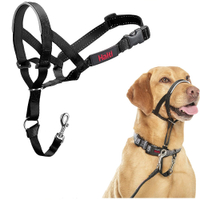My dog’s leash pulling made walks miserable until I helped her reactivity, here’s how
I was determined to help my reactive dog relax on the leash but it wasn’t easy
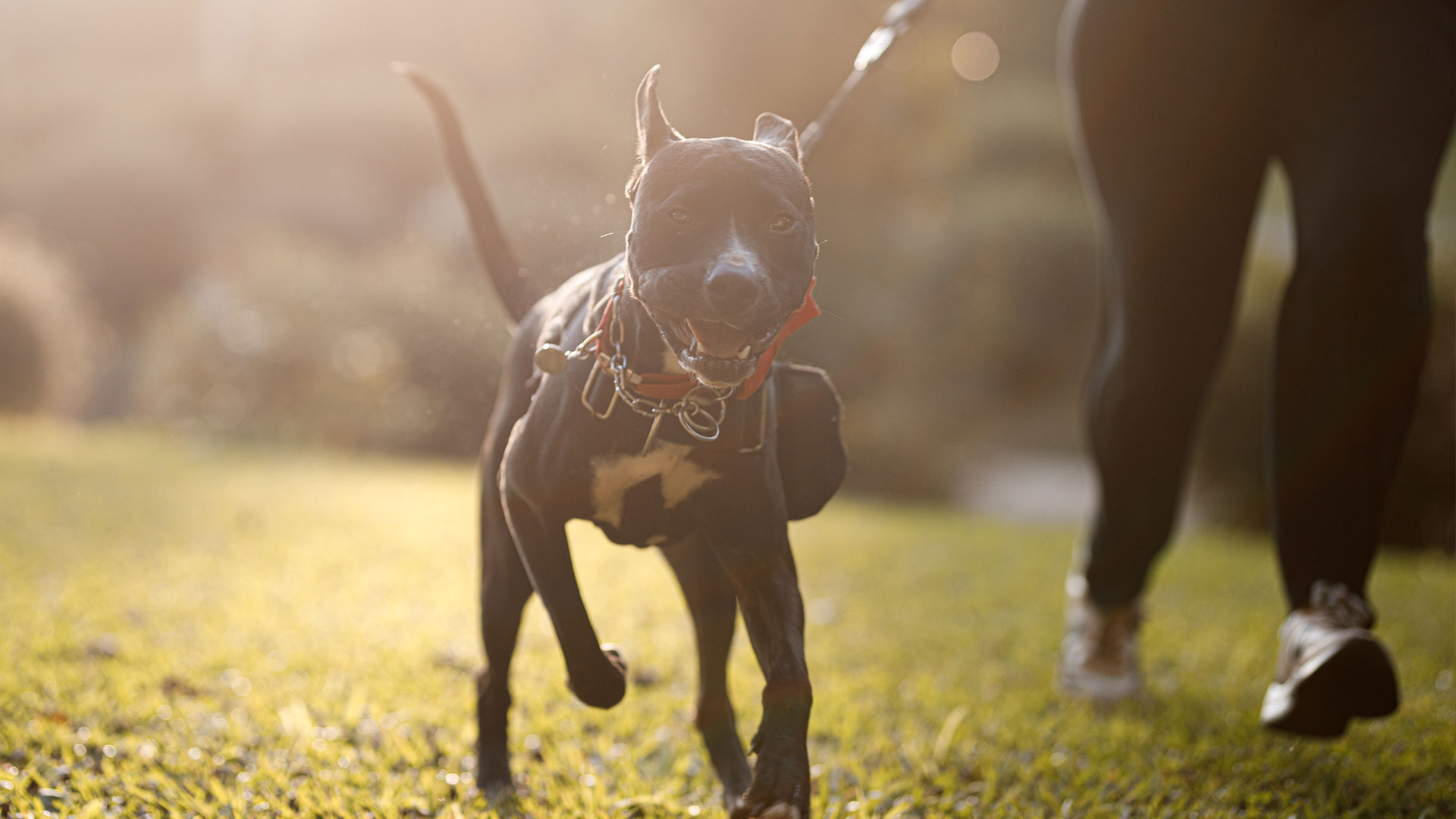
My Bull Terrier Cross rescue dog Luna had three homes in less than two years before she came to me in July 2019. After being used as a toy, a fighting dog, and being abandoned, I was determined to give Luna a forever home.
While living with those families, Luna escaped whenever she could, and when the local police took her off the streets, she was covered in ticks and scars and starving. She was destined to be put to sleep until I agreed to take her in. Luna almost died from a tick infection, but once she recovered, it was clear she was hard to handle. Her natural Bull Terrier bounciness, together with the strong will that helped her survive on the streets, lack of training, lack of affection and under-socializing in her formative years meant she had no manners and no boundaries. Walks were torture, because Luna lunged at everyone and anything, desperate for the affection she’d missed out on. I had a reactive dog on my hands.
One-on-one sessions with a trainer improved Luna’s behavior on the leash slightly, but didn’t help when we encountered people or dogs on our walks. If a car or a cyclist passed, Luna lunged at them, dragging me with her and causing friction burns on my hands as I grappled with the leash to control her. To Luna, everyone and everything was there to jump on, and it was dangerous for us both.
Certified animal behaviorist Angela Holt soon identified our problem: ‘With dogs, there’s a finite time for soaking up the information they need to learn what’s expected of them, and rescue dogs miss out on that. Luna craves attention – any attention – and she’ll do what she has to in order to get it. It’s not a training issue, and it can’t be fixed in a training environment with other dogs, or by shouting. She must learn to be calm away from the stimuli that provoke reactivity in dogs, and she can’t just demand attention in any situation.’ Angela came up with various strategies to modify Luna’s behavior so we could enjoy our walks.
1. Try a head collar (safely)
Angela recommended a Halti Training head collar, combined with what she considers to be one the best dog leashes – a Halti Training Leash – to discourage Luna from pulling, rather than a harness, which can encourage pulling in breeds with high upper body strength. A Halti allows the dog to be gently guided in the direction you want them to go with a slight movement of the leash, so the handler is always in control. It’s preferable to a choke collar, which Angela sees as a punishment rather than encouragement. She says: ‘Use positive reinforcement to keep the dog walking to heel; alongside the Halti, have some small treats in your pocket. Luna will smell them and stay close by, hoping for treats. Reward her with a treat or a pat when she does as you ask.’
Luna is very food oriented, and the first time I used the Halti and treat combination, there was an immediate improvement, but to help with the reactivity, Angela had another great idea.
Available in six sizes and seven colors, this headcollar prevents pulling on the leash by gently steering and guiding your dog’s direction. Can be used in conjunction with the Halti Training Leash.
2. Work with a combination of wait and release commands
Teaching dogs to sit and stay is basic training, but a reactive dog needs something extra. Angela explains: ‘Asking a dog to sit or stay is a temporary thing, unless it’s reinforced with repetition. Otherwise, it’s a trick the dog does for reward, and what’s needed here is behavior modification. To keep Luna calm when a distraction approaches or passes close by, pair Stay or Wait with a release command, so she stays put until you give the cue to move on.’
PetsRadar Newsletter
Get the best advice, tips and top tech for your beloved Pets
I worked on familiarizing Luna with the ‘Wait’ command when crossing the road, going up steps, through gates, and walking along the street, before tackling a proper walk. I also practiced stopping at random times without using any command, to encourage her to act on silent cues. After a few false starts, Luna halted each time I did, so I introduced ‘Okay’ as the release command. She realized that once she was asked to wait, she needed the release command before moving again. Every time Luna got it right, I said she was a ‘good girl,’ reinforcing her good behavior and forming a new habit.
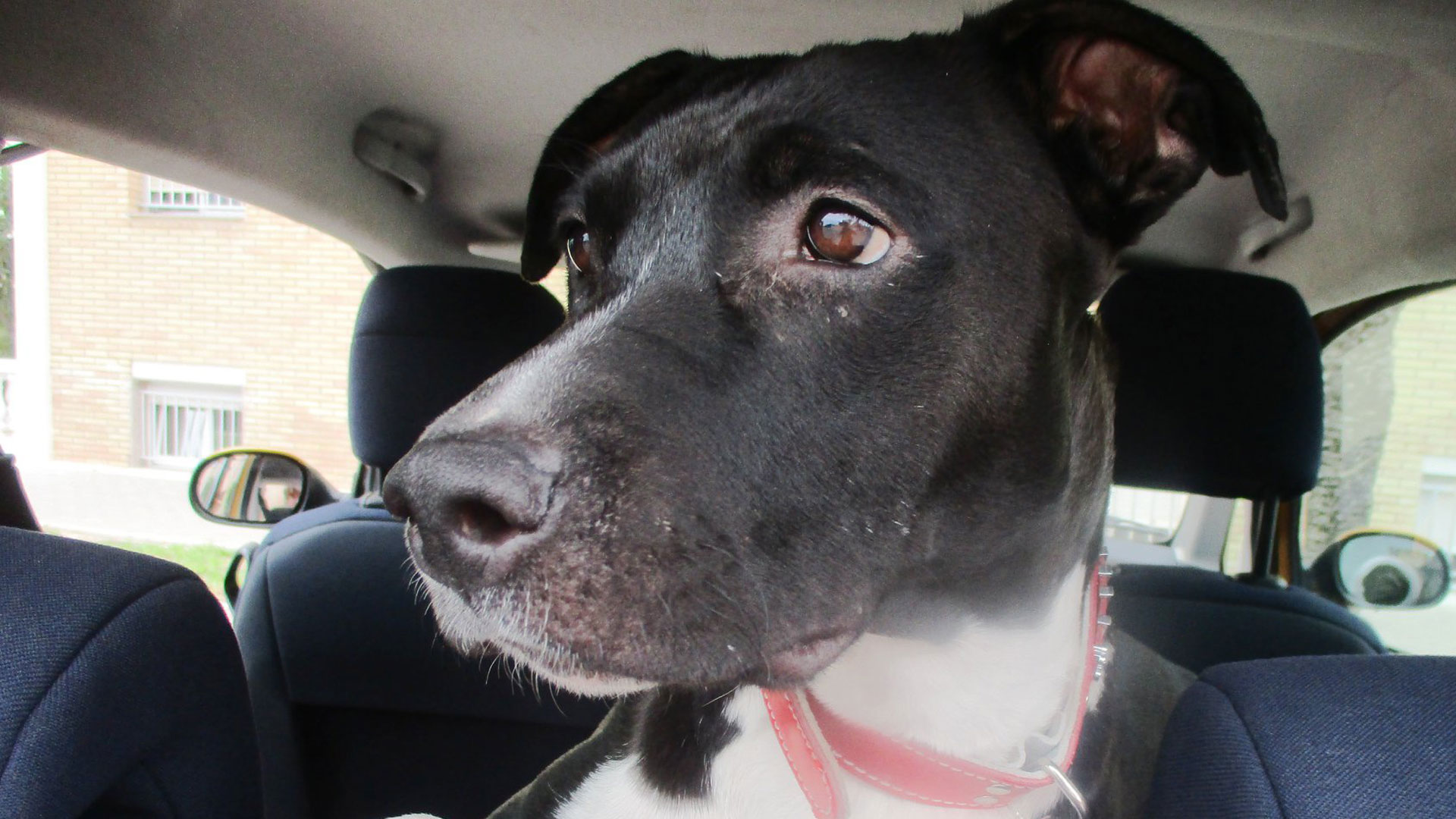
3. Build your confidence as a handler
When dealing with leash reactivity, the cues dogs pick up from their handlers can make things worse. I dreaded taking Luna out, and was always on the watch for triggers, therefore unwittingly magnifying the issue. Angela says: ‘Reactivity on the leash stems from fear, not aggression. The dog can’t escape from the stimulus, and if the owner is anxious, she senses there’s trouble ahead, and prepares to deal with it. If I take Luna from you to settle her, she’s not reactive with me, because I don’t put out anxiety cues. To help Luna relax, you must stay calm, since she takes her behavior cues from you.’
That’s great advice, but difficult to accomplish with a reactive dog. I worked on the Wait/Okay commands and random halting until it was second nature for Luna to stop when I did. Then I felt ready to try a short walk. Suddenly, walking Luna was much less stressful!
4. Don’t teach your dog to ignore you!
Angela says it’s important to keep commands quiet, firm, and simple to reduce leash reactivity and remind the dog who calls the shots. ‘When a dog gets silly, the handler tends to use increasingly desperate and louder commands like ‘ Stop … wait .. no ..’ The dog doesn’t know what to do, so she just ignores you. If the first command doesn’t work, the second one won’t either. Ignore the silliness and keep walking on a short leash.’
I plead guilty to that one! It’s natural to stop walking, and try different commands when the first one doesn’t work, but that’s just going to stress the dog and the handler. Walking on as if nothing happened takes practice, but it works. It sends the message you’re in charge.
Using Angela’s strategies, I could soon walk Luna with confidence and enjoyment. I started to take my friend’s dog, Gizmo with us, and I could hold both leashes in the same hand! Recently, I stopped off with both dogs at a local bar following a two-hour walk. They settled under the table after water and treats and relaxed until we were ready to leave. As we headed home, a guy at another table stopped us and said: ‘Your dogs are so well-behaved. You should be proud of them. Good job!’
I am always proud of Luna, despite the challenges we’ve worked through, but I never expected to hear ‘well behaved’ in a sentence referring to her! When I first took Luna to Angela, I asked if she could help us. She replied, ‘Can we cure Luna’s leash reactivity? One hundred percent we can!’ I thought she was optimistic then, but now I know that with expert help and lots of love, patience, and trust on both sides, walking reactive dogs like Luna really can change from miserable to magical.
Find out more as our vet answers; do calming treats for dogs work?
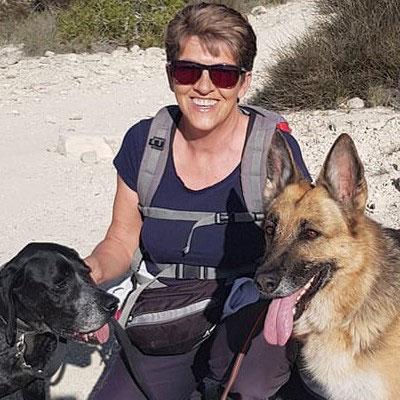
Angela Holt has worked as a dog trainer for more years than she cares to remember! 25 years ago, after four years of study at Southampton University, England, she was awarded Certification in Animal Behavior, encompassing all animals, because there was no option for specializing in dog behavior back then. If you need to know why your pet duck won’t eat his dinner, she can help you with that as well! She’s lived on the Costa Blanca in Spain for the last 14 years and owns Dog Training Costa Blanca, a training school for dogs and their handlers. Angela also mentors and trains students who wish to become dog trainers or behaviorists and organizes regular seminars for anyone who works with dogs as well as dog guardians keen to learn more about dog behavior. She’s well qualified to do that since she’s yet to come across a difficult dog she can’t help. Angela has three rescue German Shepherds and she loves to take them into the mountains near her home in Algorfa.
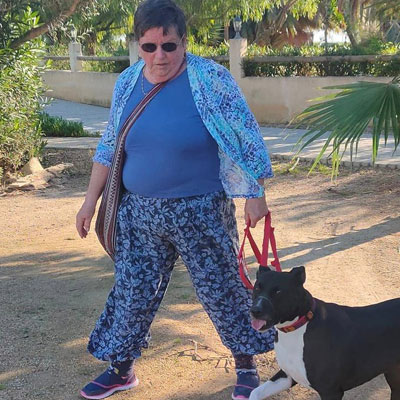
Sandra is a freelance writer and editor based in Algorfa on the Costa Blanca in Spain. As a mature student, she achieved a BA (Hons) in English Literature and History and an MA in Anglo-American Literary Relations at the University of Exeter in Devon, England. She came late to writing as a career and doesn’t have any plans to retire any time soon! Sandra is happy to write about anything that’s interesting and/or challenging, so she’s covered a wide range of topics, in print and online, including pets, life in Spain and spiritual living. Since adopting her rescue dog Luna to save her from a shelter, Sandra has written extensively about the challenges of living with an abused and reactive dog and has taken courses in dog communication and dog psychology to help her better understand the issues Luna and other rescue dogs face.
